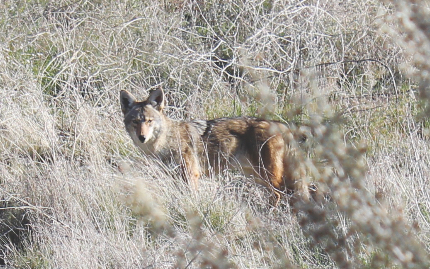By Tim E. Hovey
WON Staff Writer
LOS ANGELES – Over the last few months, southern California has seen a dramatic increase in coyote sightings and negative human interactions. In May a dog in Van Nuys was attacked in his backyard after three coyotes jumped the fence to get to him. In Mar Vista in June a pack of coyotes was reported stalking people walking their pets, and earlier this month Redondo Beach officials issued a warning to residents regarding an increase in coyote sightings in the area.
So why are we seeing a sudden increase in coyote sightings? We can start by looking at basic coyote biology. The coyote pupping season runs into the summer and young coyotes are beginning to head out to look for food on their own. If they were pupped near suburbia, they would seek out food nearby.
Coyotes have adapted well to human presence and understand that where humans reside, they will find food. This behavior has become almost instinctual in coyotes since the first European settlers arrived here. They feed on rodents that are also attracted to human habitation, pet food and more often than you’d think, pets themselves.
Coyote numbers have also been bolstered by the collapse of the fur market in the 1990’s. Less western coyotes are being harvested for fur garments, and in California especially, calling contests became unpalatable in some areas. In short, the attention on coyotes has dropped dramatically in the last few decades, leading to a seasonal increase in coyote numbers.
With this increase in coyote numbers, we start to see how residents feel about the roving neighborhood predators, especially those with pets and small children. Neighborhood meetings can become heated when the public discusses coyote presence and their place in residential neighborhoods. Most want them trapped, removed or killed. Despite this aggression towards nature, there really isn’t much that can be done to control coyote numbers.
Predator control of coyotes has been going on by the federal government for decades, but they understand that coyotes are resilient, and their control efforts are futile. A predator control study from 1950 concluded that you could reduce the coyote population by 70% year after year and you’d never make a dent. Coyotes just respond to the reduction in numbers by having larger litters and more coyotes.
If you live in an area where coyotes persist, the best you can do is be preventative. Don’t leave pet food outside overnight and don’t ever intentionally feed coyotes. If you have pets, walk them during periods when coyotes are less active, like midday. Stay aware when you’re in edge areas near wild land. Coyotes use these suburban edge spots to hunt for food and know residents routinely walk their pets in these areas.
Whether you’re pro or con coyote, one thing you’ll have to come to grips with is, they’ve adapted well to our presence and they aren’t going anywhere.




